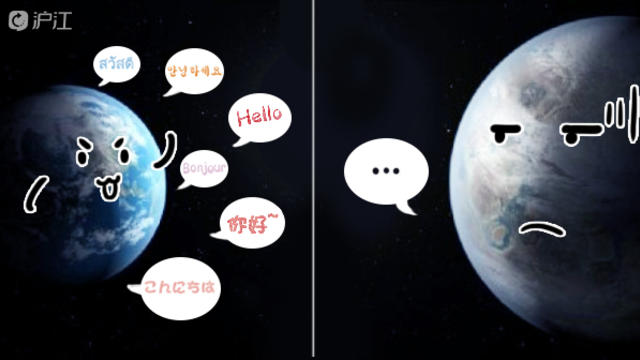四六级:这些翻译考前必看!
四六级翻译考查考生理解所给汉语语言材料并将其译成英语的能力。要求译文准确、完整、通顺。要求考生阅读、理解长度为150字左右的一个或几个汉语段落,并将其全部译成英语。
面人
面塑也叫“面人”(“dough figurine-making”),是用糯米(glutinous rice)粉和面加彩后,捏成各种小型人物,可用于收藏,也可供食用。面塑主要用于婚娶礼品、殡葬供品,也用于寿辰生日、馈赠亲友、祈祷祭奠等。制作面塑最重
要的是发面技术。“印、捏(kneading)、镶、滚”是面塑艺术的特点。就捏制风格来说,黄河流域古朴、粗犷、豪放、深厚,长江流域细致、优美、精巧。
Dough sculpture, also called “dough figurine-making”, is the art of making figurines from a colored mixture of glutinous rice flour and wheat flour, which can be used for collection and eating. Dough figurines are often used as wedding gifts and funeral offerings as well as for birthday parties, family or friendly gatherings and sacrificial rituals. What really matters for dough sculpture is the dough-leavening technique. The work of dough sculpture involves “imprinting, kneading, inlaying and rolling”. Speaking of the dough kneading, a strong, bold and unrestrained style is generally followed in the regions around the Yellow River, while an intricate, graceful and delicate style in the areas around the Yangtze River.
酒文化
中国人在7000年以前就开始用谷物酿酒。总的来说,不管是古代还是现代,酒都和中国文化息息相关。长久以来,中国的酒文化在人们生活中一直扮演着重要的角色。我们的祖先在写诗时以酒助兴,在宴会中和亲朋好友敬酒。作为一种文化形式,酒文化也是普通百姓生活中不可分割的部分,比如生日宴会、送别晚宴、婚礼庆典等。
Chinese people began to make spirits with grains seven thousand years ago. Generally speaking, wine has a close connection with culture in China in both ancient and modern times. Chinese wine culture has been playing a quite important role in Chinese people's life for a long time. Our ancestors used wine to enjoy themselves while writing poetry, or to make a toast to their relatives and friends during a feast. Wine culture, as a kind of culture form, is also an inseparable part in the life of ordinary Chinese people such as birthday parties, farewell dinners, weddings, etc.
一带一路
“一带一路”(The Belt and Road)是“丝绸之路经济带”和“21世纪海上丝绸之路”的简称。它将充分依靠中国与有关国家既有的双多边机制,借助既有的、行之有效的区域合作平台。一带一路旨在借用古代丝绸之路的历史符号,高举和平发展的旗帜,积极发展与沿线国家的经济合作伙伴关系,共同打造政治互信、经济融合、文化包容的利益共同体、命运共同体和责任共同体。
“The Belt and Road” is short for the Silk Road Economic Belt and the 21st-Century Maritime Silk Road. It will fully depend on the bi-lateral and multi-lateral mechanism between China and its related nations with the help of existing and effective regional cooperation platforms. It aims to use the historic symbol of the ancient Silk Road, raise the flag of peace and development, and develop the economic partnership with nations along the line positively, in order to build a community of interests with trustful politics, integrated economy and inclusive culture, a community with a shared future, a community with common responsibilities.
儒家思想
儒家思想(Confucianism) 是中国影响最大的思想流派,也是中国古代的主流意识思想。自从汉代以来,儒家思想就是封建统治阶级的主要指导思想之一。儒家思想的核心其实是一种人道主义(humanism)。它主要提倡自我修养,认为人是可以教化的、可完善的。儒家思想的一个宏大的目标就是实现“大同社会”,在这样的一个社会当中,每个人都能够扮演好自己的角色,并且与他人维持良好的关系。
Confucianism is the largest Chinese school of thoughts,and the mainstream consciousness of the ancient China。 Confucianism had been one of the ruling doctrines of the feudal ruling class since the Han Dynasty。 The core of Confucianism is actually a kind of humanism。 It advocates self- cultivation,and believes that human beings are teachable and improvable。 A grand goal of Confucianism is to achieve a harmonious society in which each individual plays his or her part well,and maintains a good relationship with others。
玄奘
玄奘是7世纪中国伟大的翻译家、佛学家(Buddhist scholar)和旅行家(Buddhist pilgrim)。他凭借坚定的信念、顽强的意志和杰出的智慧,跋涉数万公里,历时17年,远赴印度取经(sutras)。玄奘西行取经的过程,也是一次伟大的文化之旅。回国后,他写成了历史地理名著《大唐西域记》(Records from the Regions West of the Great Tang Empire),并翻译了大量佛经,为中外文化交流做出了重大贡献。
Xuanzang was a great Chinese translator, Buddhist scholar, and Buddhist pilgrim in the seventh century. With his unshakable belief, strong will and great wisdom, Xuanzang spent altogether 17 years covering thousands of kilometers on his pilgrimage, which was also a fantastic cultural trip, from China to India for the Buddhist sutras. After his return to China, Xuanzang wrote Records from the Regions West of the Great Tang Empire, a historical and geographic classic. He also translated voluminous Buddhist sutras into Chinese, making a valuable contribution to China’s cultural exchanges with the rest of the world.











